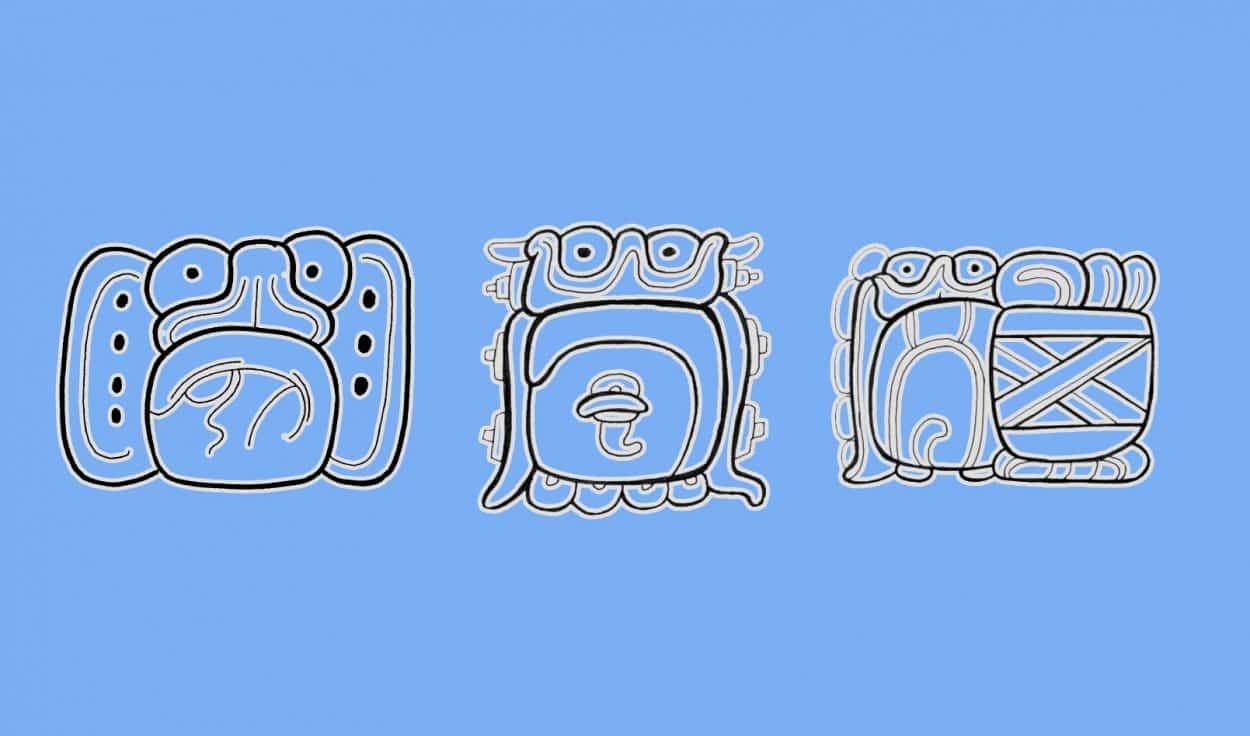The “Star Wars” were periods of intense conflict between rival polities or city states within the Maya civilisation.
The term derives from a Maya glyph, which depicts an EK’ (star) element or a “shell-over-Star”, that appears in Classic period (AD 300-900) lowland Maya monuments.
Scholars have identified four main examples of Maya hieroglyphs that relate to warfare, with the Chucʼah (possibly meaning to capture), the Ch’ak (decapitation), the Hubi (destruction?), and the Star War.
Most of what we know about warfare in Maya society comes from the depictions carved into stone monuments and stucco facades, as the Spanish burned a number of Maya codices and approximately 5000 Maya cult images. Only three pre-Columbian books of Maya hieroglyphics (also known as a codex) and, perhaps, fragments of a fourth are known to have survived.
Warfare was mainly for political control/influence, or for gaining new resources and territory between city states. The goal may also have been to acquire sacrificial victims to legitimise the ruler of a polity, or to intimidate rivals into submission and tribute.
In some instances, conflicts would escalate to a “Star War”, resulting in the fall of a dynasty, or the complete dominion of one polity by another. An inscription from a monument found at Tortuguero (dating from AD 669) which describes the aftermath of a “Star War” states: “the blood was pooled; the skulls were piled”.
“Star Wars” also appear to have had a seasonal bias, clustering in the dry season from November through to January. Few were recorded to have happened during the planting season, and none during harvest time between mid-September and late October.

The first example of a “Star War” was in AD 562 during a conflict between the peoples of Caracol and Tikal. Caracol had been a client state of the more powerful city of Tikal, but after a series of battles between Lord Water (Yajaw Te’ K’inich II) of Caracol and Lord Double Bird (Wak Chan K’awiil) of Tikal, Double Bird was defeated, and Tikal spiralled into a period known as the Tikal mid-Classic hiatus.
Subsequent “Star War” events have been documented up until AD 781, including:
• Calakmul/Caracol (winner) and Naranjo (loser) in AD 631
• Caracol (winner) and Naranjo (loser) in AD 636
• Tortuguero (winner) and an unnamed polity (loser) in AD 644
• Dos Pilas (winner) and Tikal (loser) in AD 670
• Palenque (winner) and anunnamed polity (loser) in AD 672
• Tikal (winner) and Dos Pilas (loser) in AD 672
• La Corona (winner) and Tikal (loser) in AD 677
• Naranjo (winner) and Caracol (loser) in AD 680
• Dos Pilas (winner) and Tikal (loser) in AD 705
• Tonina (winner) and Palenque (loser) in AD 711
• Dos Pilas (winner) Seibal (loser) in AD 735
• Piedras Negras (winner) and an unnamed polity (loser) in AD 781.
It is during these periods, where scholars have applied statistical modelling to propose that many of these conflicts co-inside with the appearance of the planet Venus (called Chak Ek’).
The Dresden Codex, one of the only surviving Maya books, includes astronomical tables for calculating the position of Chak Ek’, although any association to the “Star Wars” has been heavily disputed in recent studies. It is also argued, that Chak Ek’ may have been considered bad omens for celestial battles by all the Maya rulers, or could refer to stars or planets other than Venus.
Header Image : Replica of Mayan Mural Painting from Bonampak, representing war scenes – Image Credit : Leon Rafael – Shutterstock







